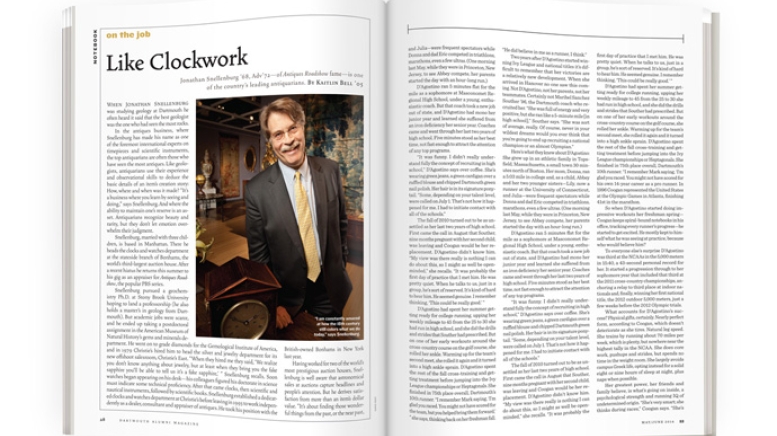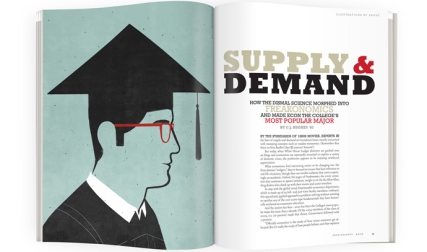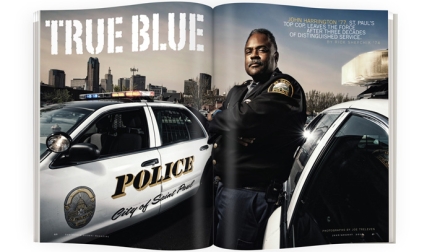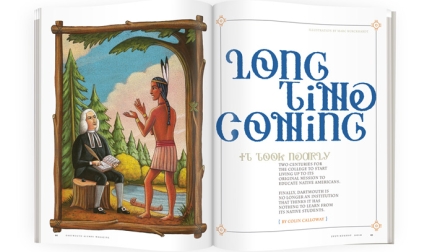When Jonathan Snellenburg was studying geology at Dartmouth he often heard it said that the best geologist was the one who had seen the most rocks.
In the antiques business, where Snellenburg has made his name as one of the foremost international experts on timepieces and scientific instruments, the top antiquarians are often those who have seen the most antiques. Like geologists, antiquarians use their experience and observational skills to deduce the basic details of an item’s creation story: How, where and when was it made? “It’s a business where you learn by seeing and doing,” says Snellenburg. And where the ability to maintain one’s reserve is an asset. Antiquarians recognize beauty and rarity, but they don’t let emotion overwhelm their judgment.
Snellenburg, married with three children, is based in Manhattan. There he heads the clocks and watches department at the stateside branch of Bonhams, the world’s third-largest auction house. After a recent hiatus he returns this summer to his gig as an appraiser for Antiques Roadshow, the popular PBS series.
Snellenburg pursued a geochemistry Ph.D. at Stony Brook University hoping to land a professorship (he also holds a master’s in geology from Dartmouth). But academic jobs were scarce, and he ended up taking a postdoctoral assignment in the American Museum of Natural History’s gems and minerals department. He went on to grade diamonds for the Gemological Institute of America, and in 1979 Christie’s hired him to head the silver and jewelry department for its new offshoot salesroom, Christie’s East. “When they hired me they said, ‘We realize you don’t know anything about jewelry, but at least when they bring you the fake sapphire you’ll be able to tell us it’s a fake sapphire,’ ” Snellenburg recalls. Soon watches began appearing on his desk—his colleagues figured his doctorate in science must indicate some technical proficiency. After that came clocks, then scientific and nautical instruments, followed by scientific books. Snellenburg established a dedicated clocks and watches department at Christie’s before leaving in 1993 to work independently as a dealer, consultant and appraiser of antiques. He took his position with the British-owned Bonhams in New York last year.
Having worked for two of the world’s most prestigious auction houses, Snellenburg is well aware that astronomical sales at auctions capture headlines and people’s attention. But he derives satisfaction from more than an item’s dollar value. “It’s about finding those wonderful things from the past, or the near past, and bringing them to light,” Snellenburg says. “You have to like what you’re looking at. You really do.”
In particular he has developed a deep appreciation for the creations of the 18th century, a great period of clock building that in many ways marks the dawn of the modern era. “I am constantly amazed at the science, technology, art and literature of the 18th century and how it still colors what we do today,” Snellenburg says, though he notes he’s “not one of those people who wishes I could be part of a Masterpiece Theater costume drama.” He is, he says, more than happy to take advantage of his BlackBerry, iPod and various other accoutrements of modern life.
Because of eBay, Bonhams—which has been around since 1793—must convince potential buyers of the value of “experience and expertise.” The essence of the pitch, as Snellenburg puts it, is “I know what it is that you’re bringing me. I know what it is, I know whether it’s genuine and I know approximately what it’s worth.”
To know all that requires a good deal of old-fashioned legwork. Snellenburg is discreet about exactly how he sources his goods but says he has built long-term, trusting relationships with dealers, collectors and estates around the country. He spends a third of his time on the road. A top-quality digital photo can indicate whether an item has potential for a Bonhams auction, but it’s not sufficient. To assess value and salability a dealer such as Snellenburg needs to examine a watch or clock up-close from all angles to see the tiny, often-hidden details that are marks of superior craftsmanship, such as the metalwork on clocks from the German Renaissance, in which the decoration on the interior mechanism is as intricate and exquisite as that on the outside.
Snellenburg likes to stress that antiques, for all their beauty, are not just pretty things that happen to be old. “They are the useful objects of daily life in the past,” he says. Those beautifully decorated German Renaissance clocks are also “superior calculating devices.” An 18th-century Georgian teapot is shaped to pour in a steady stream and insulated to prevent burning your hand. The best-designed chairs are those on which one can sit comfortably. The pieces Snellenburg most admires are those “that blend utility and design so seamlessly that you’re unaware a great work of art is also functional.”
No matter how beautiful the form and how practical the function, though, an antique has no intrinsic value unless there’s a market for it. Vintage watches present an interesting case study. American watch companies Waltham and Elgin mass-produced more than 100 million watches during the first half of the 20th century and, as a result, Snellenburg estimates that 90 to 95 percent of watches from this period have no secondary value. “A watch is an heirloom. No one ever threw one away. They all survived.” The average person at Antiques Roadshow or at appraisal events such as those Bonhams holds monthly in San Francisco and Los Angeles tends not to realize this. “It was my grandmother’s watch,” they’ll say, and produce a picture of the grandmother in question wearing the watch. Unfortunately, as Snellenburg points out, the grandmother was probably one of tens of thousands of women who wore the same, mass-produced watch. Collectors have more than enough to go around.
In his stints on Antiques Roadshow Snellenburg has to deliver such pronouncements frequently—and as gently as possible. On the upside, “Every object has a story, and what you find after you do the show for a while is very often people just want to know what it is, where it was made, whether there are others like it,” he says. “And if you can give them that knowledge they’ll go away feeling they’ve had a rewarding experience, even if the item is worth very little.”
Still, it’s the hope of a rare, undiscovered find that keeps collectors, dealers and auctioneers antique-hunting. During the first season of Roadshow a woman brought in an extraordinarily rare English astronomical watch from the 17th century, when the British Empire was rapidly expanding its reach around the globe. For the next eight seasons of the show Snellenburg kept up hope he’d find another—not because of its approximately $15,000 value but just for the thrill of discovery. A dozen years later he finally came across a strikingly similar watch, one of perhaps a dozen such pieces in existence. He appraised it similarly; it sold at auction at Bonhams last year for $30,500.
He’s had plenty of other surprises. Twenty-five years ago a client walked into Christie’s with a French Renaissance-era clock wrapped in a paper grocery bag. “One of the greatest clocks ever made,” according to Snellenburg, the piece had previously been valued at a paltry $50. The educational institution that owned the clock was cleaning house and wondered if the piece still had value. It subsequently sold in the high five figures. Other people have brought him fantastically valuable items wrapped up in baby diapers or, conversely, “the most elegantly boxed rubbish,” Snellenburg says.
Through the years he has amassed a research library, but no clock or watch collection of his own. With his own timepiece hidden by his sleeve, Snellenburg refrains from flashing it when asked what kind he wears. “A practical one,” he says, then coughs. “It’s my profession…and if I had a very valuable watch I’d be afraid to wear it, because I’m very hard on them. I would break it.”
Kaitlin Bell is a freelance writer who lives in New York City. She profiled Josh Marcuse ’04 in the September/October 2009 issue.




